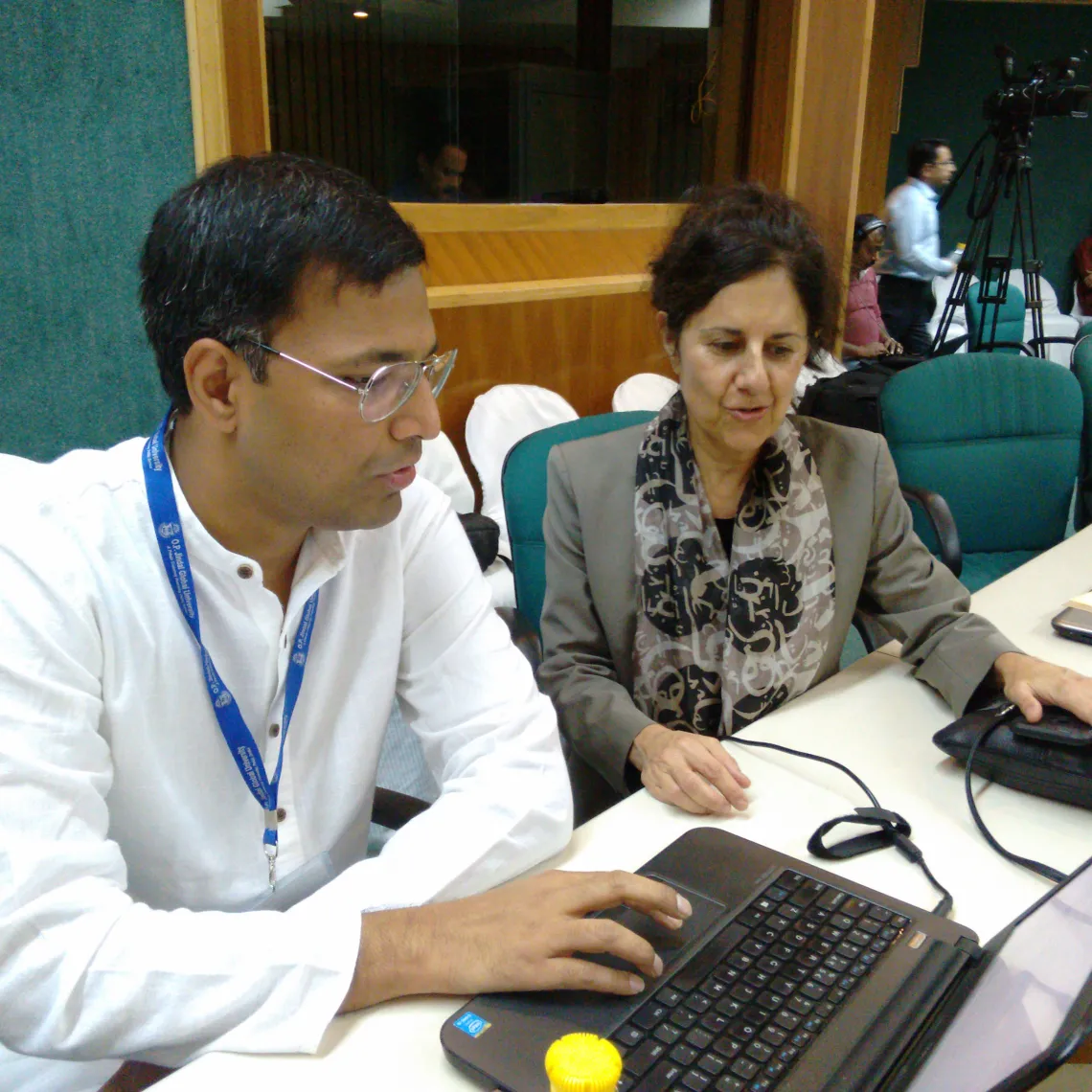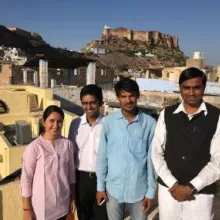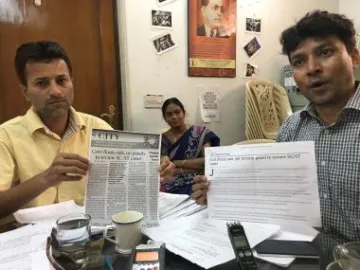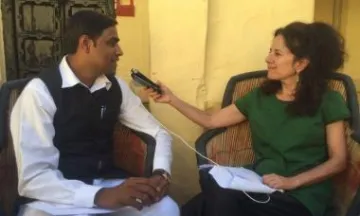India's Right To Information Act Provides Lessons On How To Advance Government Transparency
New UA-led research found that collaborations between journalists, social activists and civil-society organizations were essential to the success of creating a right-to-information agenda in India.

Rajdeep Pakanati and Jeannine Relly before their research presentation at the O.P. Jindal Global University-Stanford University Conference in New Delhi on "Deliberative Democracy: Institutions, Law and People." The panel was titled, "Strengthening Democracy Through the Right to Information."
By studying the social response to India’s Right to Information Act, a University of Arizona researcher has uncovered how the world’s largest democracy created a culture that demands government transparency and what the rest of the world can learn from it.
More than half the countries in the world have freedom-of-information legislation, and Jeannine Relly, an associate professor in the UA School of Journalism, studies the influence of those laws on democratic governance. In 2016, she received a Fulbright fellowship to spend four months in India studying the social movement surrounding India’s Right to Information Act, or RTIA.
"It is a very important country to follow for how citizens navigate these complexities to uphold information rights," Relly said of India, which has the world's second largest population with 22 official languages and great disparity in income levels.

In 2005, India adopted one of the world's strongest freedom-of-information laws, which promises information access to those who do not read or write, offers free public records for the poor, and applies to all branches of government. India's citizens are known for their activism around the legislation.
Relly and co-author Rajdeep Pakanati, an associate professor at O.P. Jindal Global University, studied India to determine what it takes to create and sustain a strong freedom-of-information culture and promote government transparency.
The resulting paper, "Freedom of Information Lessons from India: Collaboration, Coproduction and Rights-based Agenda Building," was published online this week in the journal Journalism: Theory, Practice and Criticism.
Relly and Pakanati conducted in-depth interviews with 111 people from 20 cities and towns throughout the country and found that creating a rights-based agenda was critical not only to the success of lobbying to get the RTIA adopted, but also in getting people to use it and act on the information they obtained for the greater good.
They found that various groups worked together in sustained campaigns to convince citizens that access to information should be their right, legally and ethically.
One newspaper, the Indian Express, adopted a “Your right to know” campaign in the early years after the RTIA adoption and invited citizens to weekly gatherings. Activists and civil society organizations go into communities and offer training on how to make a record request, sometimes staying for days or weeks in vehicles equipped with teaching props such as puppets and musical instruments.
The researchers also found that the collaboration between journalists, social activists and civil-society organizations, or CSOs, was essential to the success of creating a right-to-information agenda.

Most journalists do not regularly use the RTIA directly, according to a 2013 study by Relly and UA School of Journalism Director Carol Schwalbe. That earlier research found that only 2 percent of news reports in the three largest English-language dailies in India reported using the legislation in corruption investigations.
“Harried work conditions were not always ideal for journalists to carry out investigations using the RTIA,” Relly and Pakanati wrote.
Relly's new research showed that many journalists rely on CSOs and social activists to file the RTIA requests and share the information with them.
In one project with journalists and civic organizations, 11,000 requests for information were made. In another case, a social activist used social media to convince 2,000 citizens to show up at a public hospital as he requested information to hold the government accountable because of the dearth of doctors available to citizens.
"Some journalists had up to 20 record requesters whom they were working with at no cost, with some journalists providing CSOs or social activists’ questions to regularly file record requests on the journalists’ behalf," Relly said.
Another important collaboration noted by the researchers addressed the violence against RTIA requesters. More than 72 requesters have been killed and more than 340 attacked, harassed and threatened in cases reported since 2005. A Delhi-based human rights organization maintains the database "Hall of Shame," where people can file complaints if they are threatened. Many of those stories are amplified by the media.

In the interviews Relly conducted, she was told many stories of RTIA requests that uncovered improprieties and resulted in citizens struggling to feed their families obtaining their due ration cards or obtaining pay for guaranteed work, and classrooms without teachers being staffed.
"India is a global example of citizens in a democracy exercising their rights under the law to request information to better their everyday lives and so that they can stay up to date about government activity or inactivity," Relly said.
Relly hopes that the research provides insight to activists and journalists about the sustained work and collaboration required to create a culture where citizens demand and use their right to information to improve lives.
“Since issues related to corruption are an issue everywhere and can be the most devastating economically in developing nations, this type of 'people's movement' can be a catalyst to keep access to public information on the agenda and alive,” Relly said.

